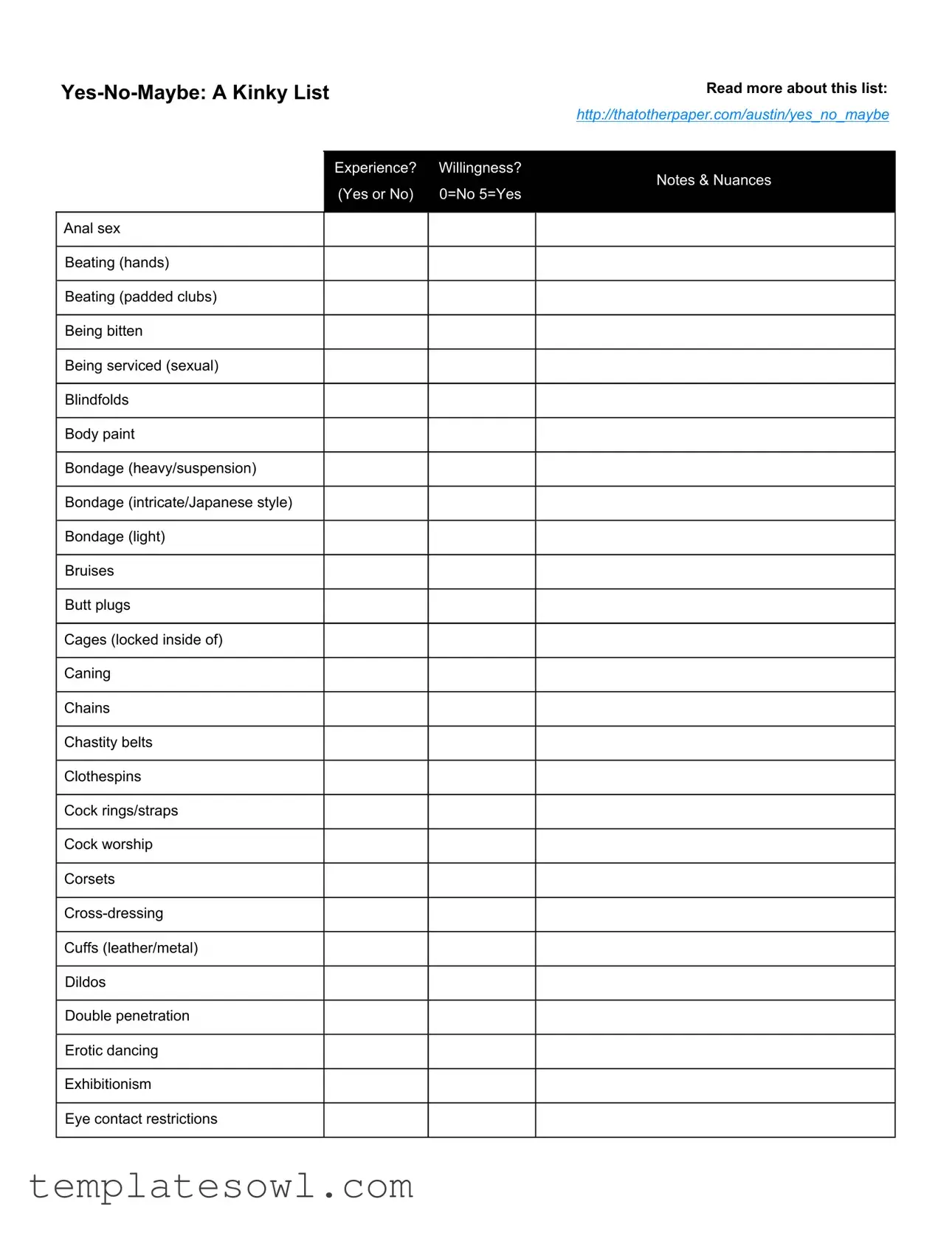What is the Yes No Maybe List form?
The Yes No Maybe List form is a tool designed for individuals to communicate their interests, boundaries, and experiences concerning various sexual practices. It encourages open discussions about preferences, ensuring that all parties are aware of each other’s comfort levels. This instrument can be especially useful for those exploring non-traditional or kink relationships.
How is the form structured?
The form contains a comprehensive list of sexual activities categorized as "Yes," "No," or "Maybe," accompanied by a rating scale from 0 to 5. Participants indicate not only their willingness to engage in specific practices but also whether they have prior experience. Additionally, space for notes allows individuals to detail nuances or specific boundaries related to each activity.
Who should use the Yes No Maybe List?
This form is intended for adults exploring their sexual interests and boundaries, especially those engaging in BDSM or kink. It is beneficial for couples, polyamorous groups, or anyone seeking to enhance their communication about intimacy. Individuals can utilize the list to set clear expectations and foster a safe environment for exploration.
What are some common concerns regarding privacy?
Concerns about privacy are valid when discussing intimate topics. The Yes No Maybe List should be completed in a confidential setting to ensure that personal information remains private. Participants are encouraged to discuss their preferences in a safe space and establish mutual trust before sharing the completed forms with partners.
Can the list change over time?
Yes, an individual’s preferences may evolve. New experiences, relationships, or changes in comfort levels can influence their responses. It is advisable to revisit the Yes No Maybe List periodically to reflect personal growth and changing desires. Regular updates promote ongoing communication and ensure all parties remain informed about each other’s boundaries.
Is there a recommended way to discuss the form with partners?
Open and honest communication is key. Participants should choose a relaxed setting where they feel comfortable discussing the completed form. It may help to begin with a conversation about general preferences before diving into specific activities. Partners should actively listen and respect any concerns or boundaries that are expressed.
What if someone feels pressured during the process?
No one should ever feel pressured to participate in activities that they are uncomfortable with. It is essential to create an environment where all parties can express reservations freely. Establishing a safe word or signal can help ensure that discussions remain consensual and that participants can withdraw consent at any time.
Are there any additional resources available for those interested?
Yes, numerous resources are available for individuals exploring BDSM and kink. Books, workshops, and online forums can provide valuable insights, guidance, and community support. Engaging with these resources can enhance understanding of activities listed and assist in safely navigating personal desires and boundaries.
How can aftercare be addressed on the form?
Aftercare refers to the care and comfort shared between partners following a potentially intense experience. The Yes No Maybe List includes a section for noting aftercare preferences, ensuring that individuals communicate their needs for post-activity comfort, reassurance, and emotional support. It is important to establish these needs prior to engaging in any kinks or sexual practices.




